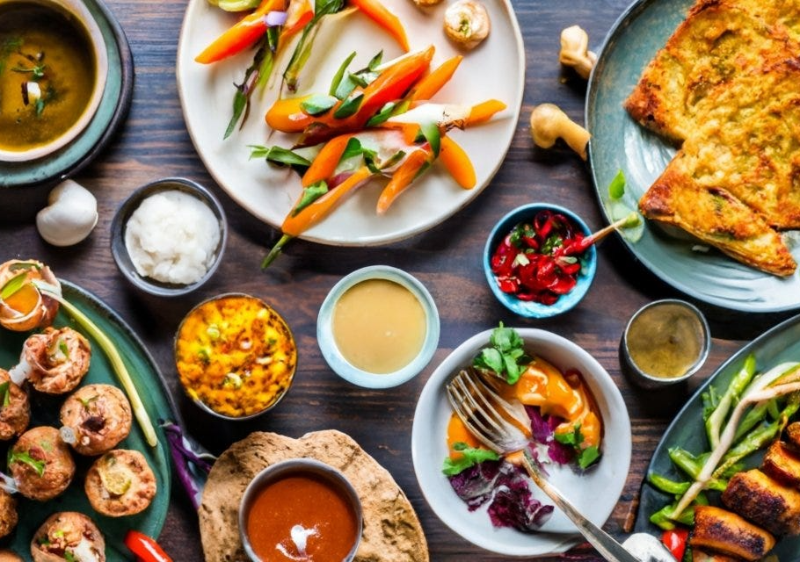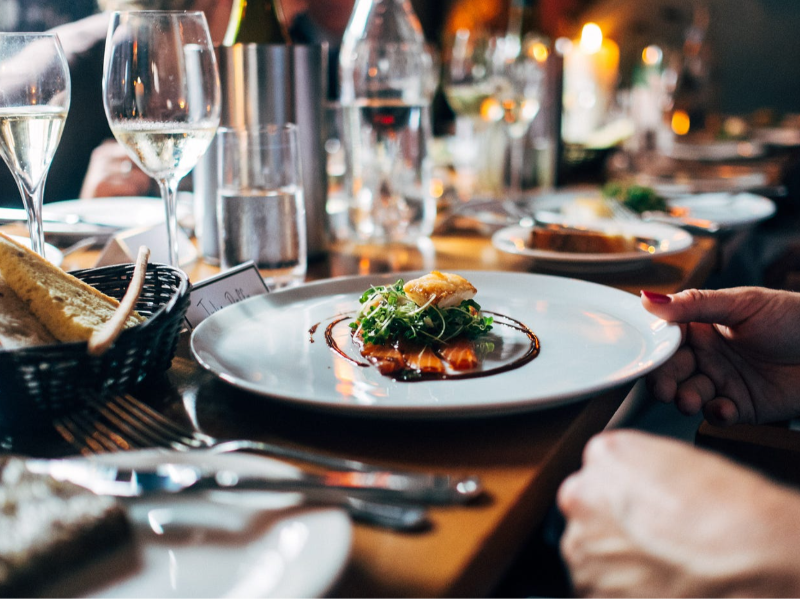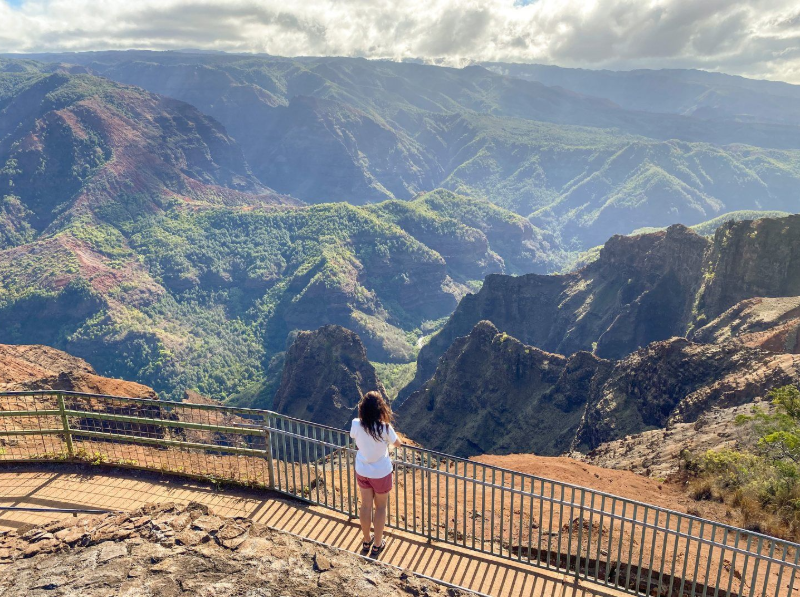
Looking for a new spin on solo travel? Forget sightseeing itineraries only; why not fuel your journeys with flavors instead? Culinary travel blends exploration with indulgence, transforming your solo adventures into memorable food and wine experiences.
Dining in a local's home in Porto, attending a food film festival in New York, cooking paella from scratch in Barcelona, and savoring the smells of Parisian bakeries with a knowledgeable guide—these are just some of the most joyful memories among adventurous solo foodies. But here’s the secret to successful culinary travel—it starts with a little planning. Here’s how to create your own tasty path to culinary bliss.
Benefits of Culinary Travel for Solo Travelers

Before unpacking how to craft your perfect culinary travel experience , let’s savor why immersing yourself in culinary travel as a solo explorer is transformative. Far more than just eating your way through a destination, it’s a passport to human connection, cultural fluency, and self-discovery:
- Authentic Connections Through Shared Flavors
Food is humanity’s universal language—a steaming bowl of pho in Hanoi, a communal tagine in Marrakech, or a hands-on pasta-making class in Tuscany. As a solo traveler, these moments dissolve barriers: chatting with a street vendor about their secret spice blend, bonding with fellow foodies over a vineyard tasting, or learning ancestral recipes from a local grandmother. Culinary travel turns strangers into storytellers, offering intimacy that transcends sightseeing.
- Broadened Horizons, One Bite at a Time
Every dish is a history lesson. Imagine uncovering the Silk Road’s influence in Uzbekistan’s plov, tracing the Afro-Caribbean roots of Brazilian moqueca, or discovering how Japan’s kaiseki cuisine mirrors seasonal poetry. Beyond tasting, you’ll engage in rituals—harvesting saffron in Iran, fermenting kimchi in Seoul, or roasting coffee in Ethiopia—gaining skills that deepen your understanding of a culture’s values and resilience.
- Solo Freedom Meets Structured Discovery
Unlike generic itineraries, food-centric travel gives purpose to your independence. A morning market tour becomes a navigation challenge; a wine-tasting bike route through Bordeaux turns into a sensory scavenger hunt. Meals anchor your day, offering natural opportunities to reflect or connect—whether scribbling notes at a Parisian café or joining a convulsive izakaya crawl in Tokyo. Plus, focusing on food means you’ll always have a conversation starter (or a delicious distraction).
Now, let’s translate this inspiration into action. Below, we’ll explore step-by-step strategies to design a culinary adventure tailored to your palate, budget, and appetite for exploration—from choosing where to eat to mastering the art of solo dining with confidence.
1. Dine Where Locals Live
Food tells a story, and there's no better way to immerse yourself in that narrative than dining with locals in their own homes. Platforms like EatWith connect travelers with hosts around the world, offering genuine cultural experiences. Whether you’re enjoying tapas in Madrid or a farm-to-table meal in Tuscany, these dinners go beyond food—they create conversations and memories.
Pro Tip: Take advantage of EatWith discounts when you join. Already tried this in Portugal? Add it to every future destination for unforgettable evenings.
2. Use AI as Your Starting Guide
AI tools like ChatGPT can help jumpstart your planning. Ask it for a "3-day food and wine itinerary in [your destination]" for inspiration. While AI-generated lists are just starting points, combine the suggestions with your own research. Add unique experiences by checking websites for recommended restaurants, local food markets, or hidden street food spots for authenticity.
Remember to personalize your itinerary and rely on trusted sources to validate AI outputs.
3. Cast a Wide Net Online
The internet is a treasure trove for food lovers. Here’s how to maximize its potential:
- Search online for regional specialties like wines, traditional dishes, or street food hubs.
- Look up food festivals, farmer’s markets, or community events happening during your visit.
- Identify local keywords like "best wineries near Bordeaux" or “authentic sushi in Tokyo.”
Culinary gems like the New York City Food Film Festival and others often pop up in searches, so keep an open mind and explore. The goal is to uncover what makes a destination unique, from rare coffee blends to Michelin-starred tasting menus.
4. Scale Back Costs with TheFork

Solo travelers can cut food costs without compromising taste. TheFork, for example, is a restaurant booking platform that offers significant discounts in Europe. I saved 30% off a delicious meal in Porto and had more money left over to enjoy a glass or two of Vinho Verde!
Pro Tip: Book early, dine during off-hours to beat crowds, and always confirm that discounts are applied before paying your bill.
5. Subscribe for Food & Wine Insider Deals
Before your trip, subscribe to newsletters from:
- Restaurants and wineries
- Local food writers or tour companies
- Cooking schools or foodie festivals
These subscriptions deliver insider info on upcoming events, special deals, or must-visit spots. After your trip, unsubscribe to keep your inbox neat. And the next time wanderlust sparks, subscribe again for new tips.
6. Learn from Other Solo Foodies
Nothing beats firsthand recommendations. Engage with foodie-focused Facebook groups, review sites like TripAdvisor, and enthusiast communities such as Solo Travel Society. These platforms provide everything—from the tastiest bakeries in Paris to advice on which food and wine tour for solo travelers are worth your time. Just remember to approach reviews with a discerning eye since tastes and opinions vary widely.
Fun Fact: It was through an online community suggestion that I stumbled upon an incredible pasta-making class during my culinary escapade in Rome.
7. Explore Local Sources for Hidden Delicacies
Tourism guides are helpful, but for an authentic touch:
- Browse local food blogs, magazines, or newspapers.
- Check city guides like TimeOut for "best of" food lists or discount offers.
- Explore daily entertainment guides for unique events only locals know about.
It’s how I uncovered London’s hidden gem for pizza or Cork Market in Washington—a testament to keeping your eyes open for delicious surprises.
8. Sign Up for Cooking Classes

Get your hands messy with a cooking class tailored to the local cuisine. These classes, from Barcelona's paella workshops to Chiang Mai’s Thai cooking lessons, aren’t just educational—they’re personal.
Many classes include guided food market trips, hands-on preparation, and meals enjoyed with fellow foodies. Gain pro tips from local chefs, and leave with both memories and recipes to replicate at home. For even greater value, schedule your class at the start of your trip to collect tips and local dining advice early!
9. Join Food Walking Tours
Walking tours led by local food experts combine tasting, sightseeing, and exercise into one amazing half-day adventure. Picture exploring Paris with a guide who introduces you to hidden markets, boutique bakeries, or speciality cheese shops you’d never find. You’ll leave full of delicious food—and insider knowledge of the city’s food culture.
Recommendation: Book tours with highly reviewed providers, like Flavors of Paris, to ensure exceptional experiences. You’ll not only meet shop owners but learn their stories and connect with other like-minded travelers.
10. Leave Room for Spontaneity
While planning is essential, allow time for impromptu opportunities. Some of my best culinary experiences came through chance—like the wine tour I joined spontaneously in British Columbia after a chat with an enthusiastic tourist officer. Always be open to adventure, whether it’s a local food truck or an unexpected invitation to a community dinner.
Final Thoughts
Culinary travel is a feast for the senses and the soul. By combining careful planning with room for unexpected discovery, your solo adventures can be as unforgettable as your meals. Start with these tips, explore globally renowned food destinations, and create culinary moments uniquely yours. Feeling overwhelmed? No problem! Start building your personalized food and wine adventure with these tips and remember, the joy lies in every bite.




